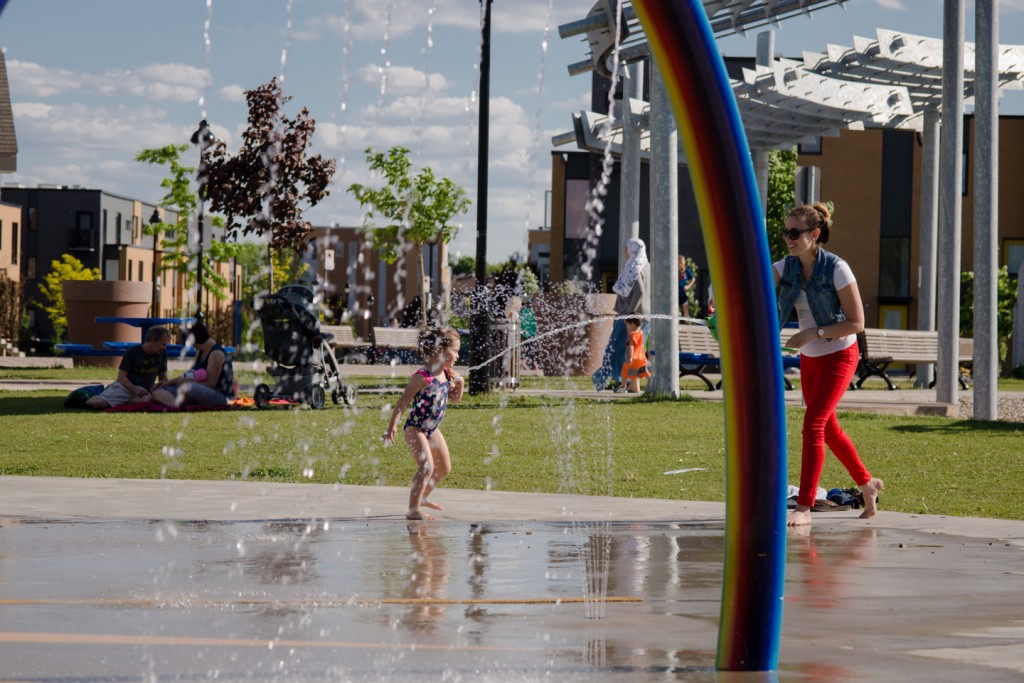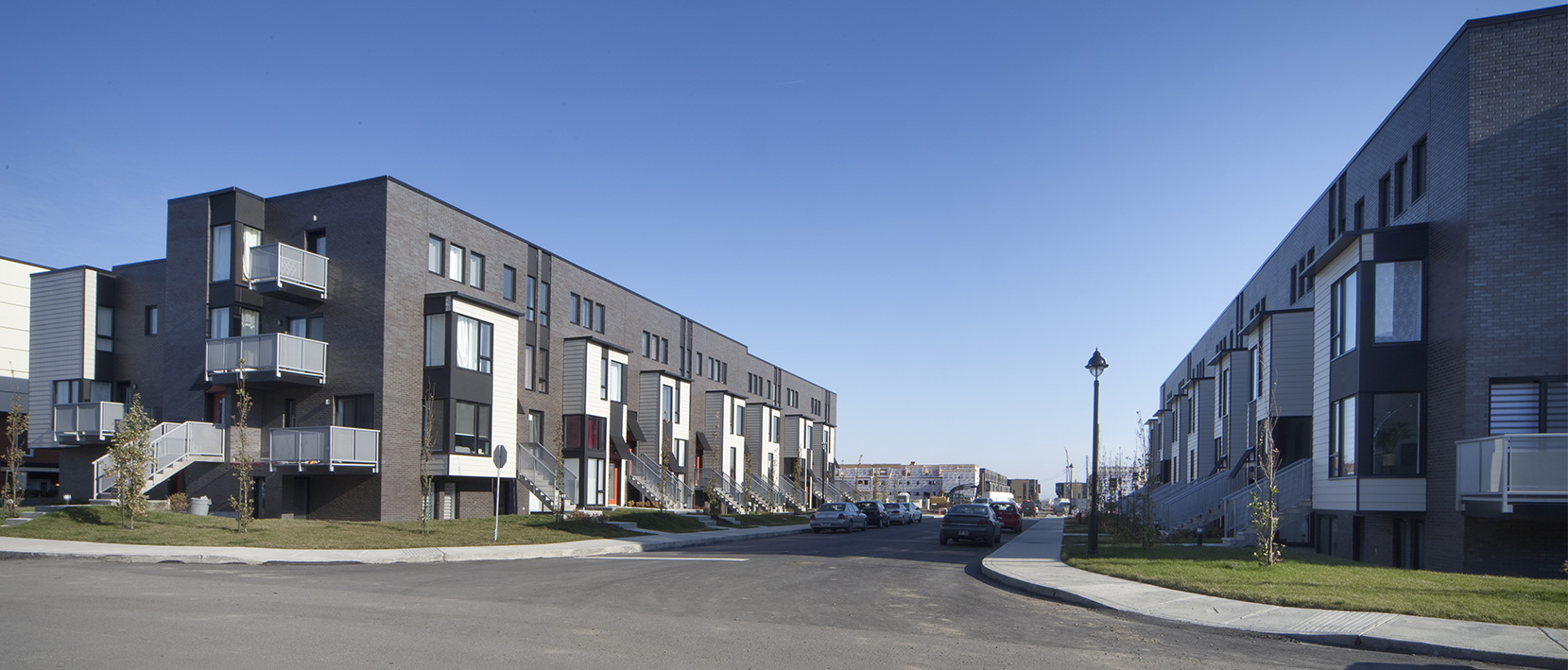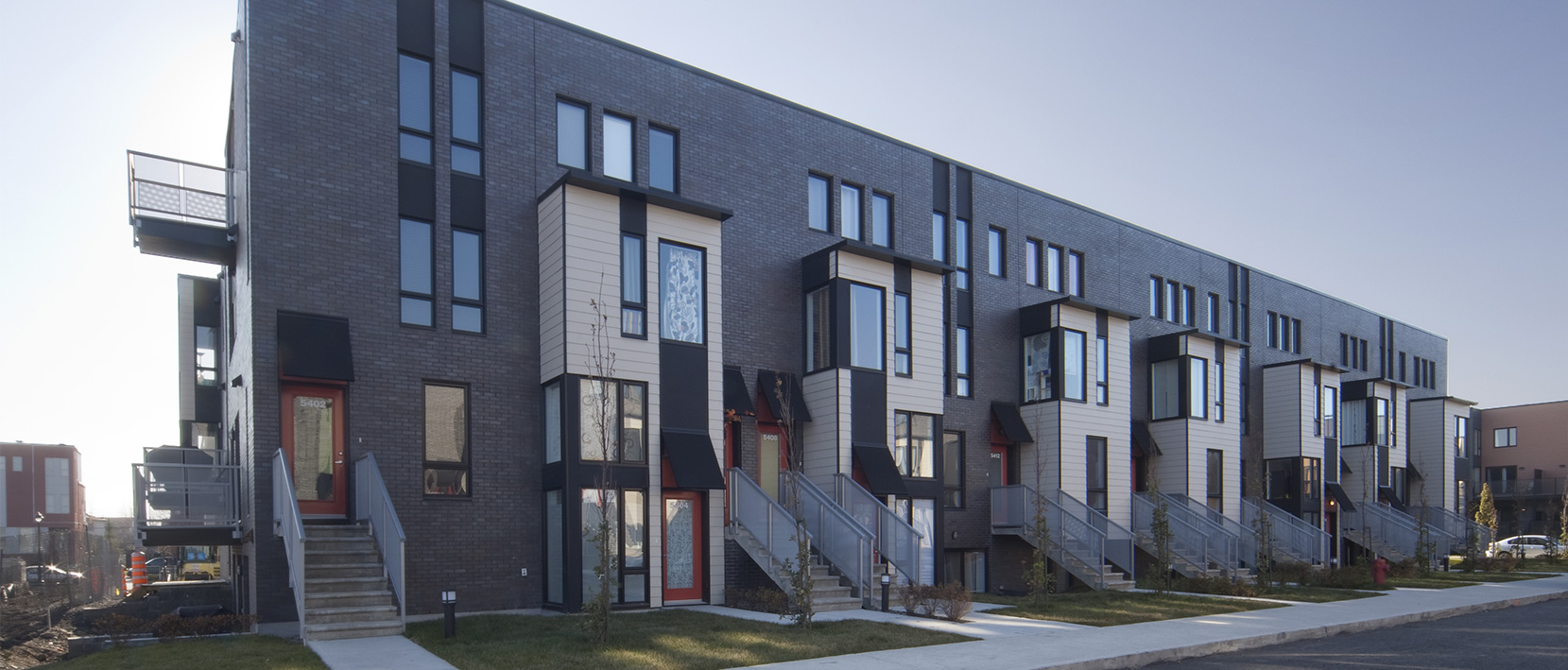Faubourg Contrecoeur (3)
Phase 3 of Faubourg Contrecoeur, a neighbourhood designed for Montréal families
Phase 3 of the Faubourg Contrecoeur project, whose construction was completed in 2012, stands out with its bright colour blocks overlaid on subdued cladding and its projecting volumes that leave room for natural light. As part of the continued development of the area, this phase had 90 townhouse-type units located in several three-story buildings on four separate lots. Of these units primarily built for families, 64% featured three bedrooms and the majority are laid out on three levels.
Condos and landscaping adapted to the needs of families
The layout of the buildings on the site, and the availability of different types of accredited Accès Condos units at affordable prices in the different phases of Faubourg Contrecoeur mainly aimed at meeting the needs of families and ensuring their quality of life. Pedestrian traffic, parking spaces, green spaces, number of bedrooms, layout of living spaces on different floors, flexible interiors, terraces and spacious balconies, everything is designed to meet the specific needs of families.

When the quality of city living contributes to curbing urban sprawl
Faubourg Contrecoeur is a truly innovative residential neighbourhood for families. The urban park Carlos-d’Alcantara and its comprehensive facilities (mini-soccer field, climbing wall, exercise equipment for adults and seniors, play areas for children and teenagers, water play park, basketball court, bike path, table tennis tables, rest and picnic areas, well-lit pedestrian trails, chalet and slope for sledding in winter) contribute to the quality of life of the neighbourhood. Residents also benefit from excellent accessibility thanks to the proximity of highways 40 and 25 and Honoré-Beaugrand métro station.
The Accès Condos accredited units of Faubourg Contrecœur meet the objectives of the Ville de Montréal by offering families an affordable alternative to buy their home and live in Montréal while curbing urban sprawl and the migration to the suburbs.







